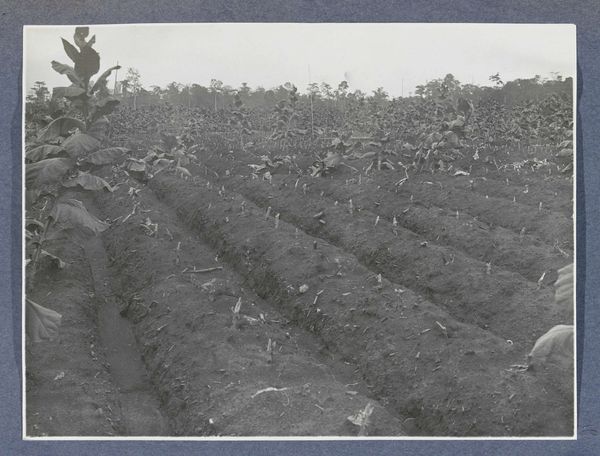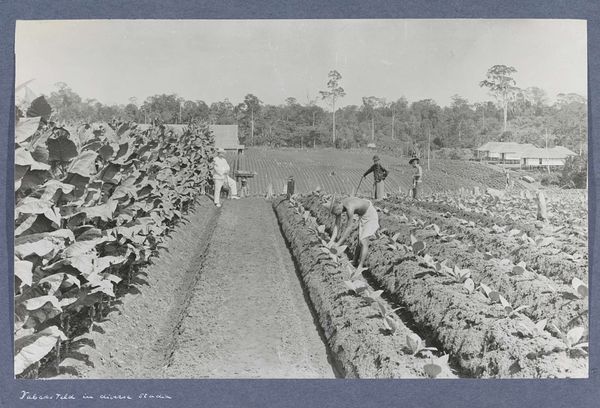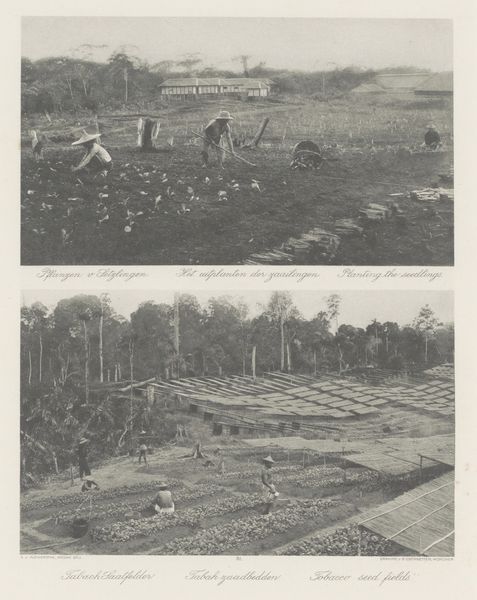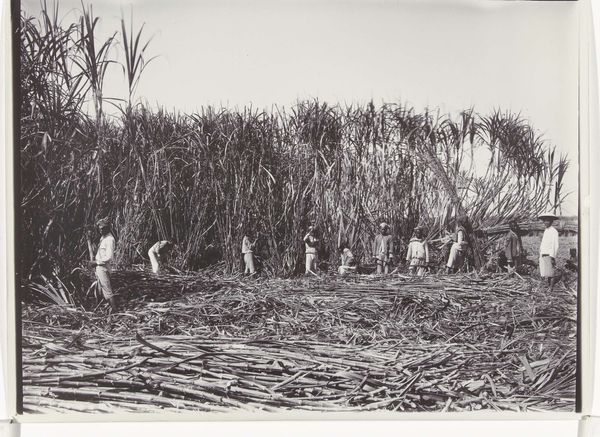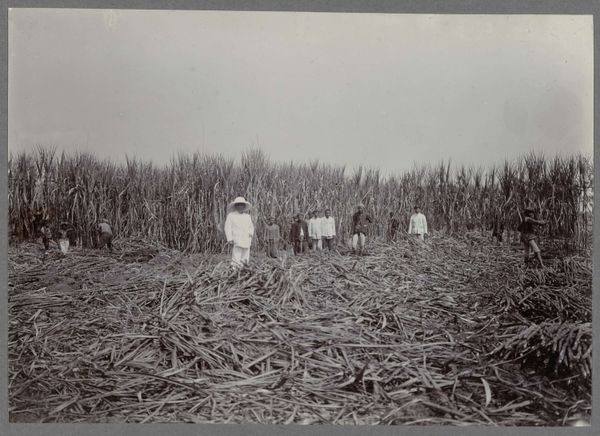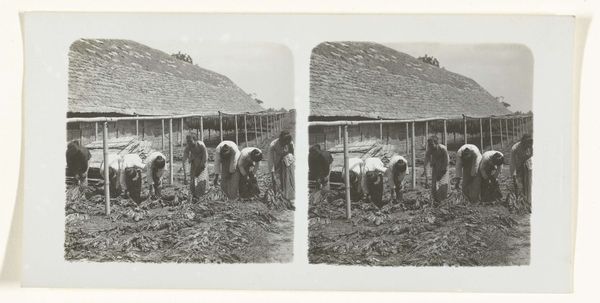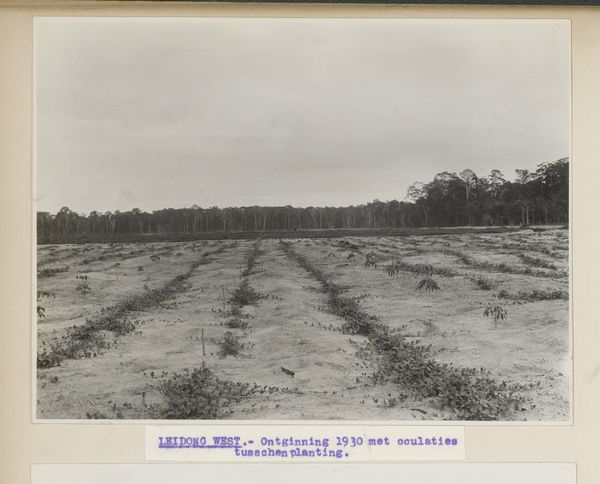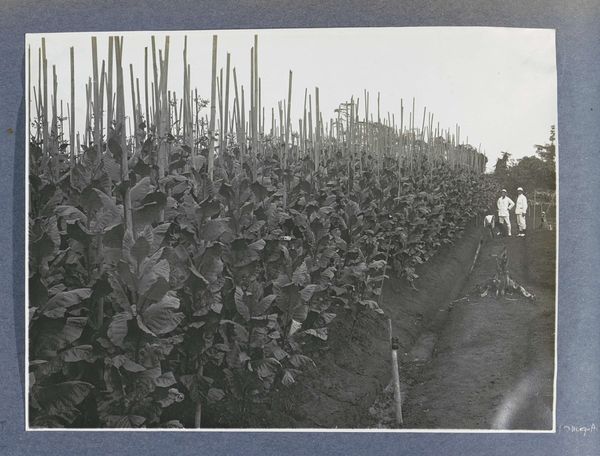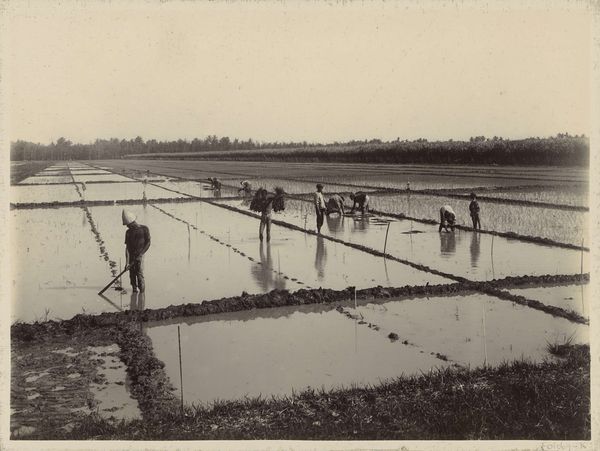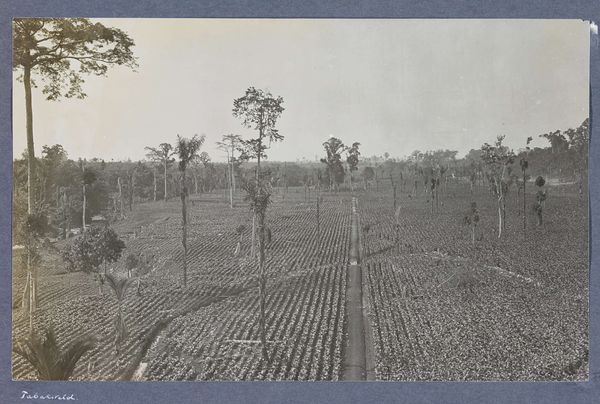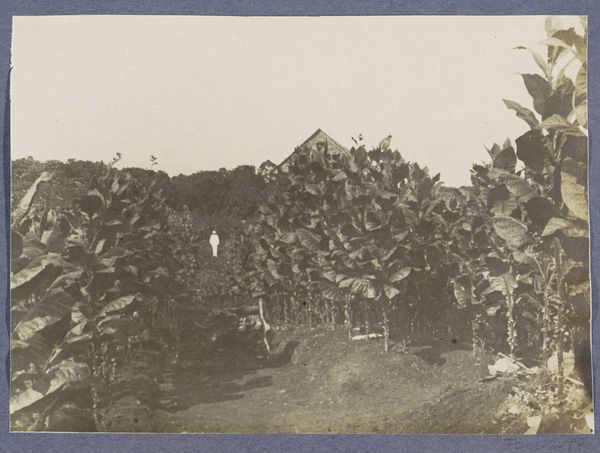
Zaaien van suikerriet op de plantage van suikeronderneming Nieuw Tersana, Cheribon, voormalig Nederlands-Indië c. 1890 - 1911
0:00
0:00
photography
#
black and white photography
#
photo restoration
#
countryside
#
asian-art
#
landscape
#
agricultural
#
nature
#
photography
#
nature friendly
#
monochrome photography
#
nature environment
#
agriculture
#
outdoor activity
#
realism
Dimensions: height 170 mm, width 226 mm
Copyright: Rijks Museum: Open Domain
Curator: The photograph we are viewing, "Zaaien van suikerriet op de plantage van suikeronderneming Nieuw Tersana, Cheribon, voormalig Nederlands-Indië," captured sometime between 1890 and 1911 by Onnes Kurkdjian, depicts the planting of sugar cane on a plantation in what was then the Dutch East Indies. Editor: My first impression is the sheer, unrelenting repetition of labor. The landscape stretches back, furrow after furrow, with these figures dotted throughout, all seemingly engaged in the same back-breaking task. It feels both intimate and vast. Curator: It speaks volumes about colonial economies and the structures of labor imposed during that period. Consider the organization required for such agricultural enterprise and the social dynamics at play on this plantation. It wasn't just agriculture; it was a highly political landscape. Editor: Yes, you can feel the weight of history. I mean, each stalk of sugar cane planted represents someone’s labor, someone’s time…and, of course, immense profit for someone else. It makes me think about what we consume, where it comes from, and the hidden stories embedded in even the sweetest things. Curator: Absolutely. The monochrome nature of the photograph further emphasizes the stark reality, devoid of romanticism. The lack of color directs us to consider the social structures depicted rather than be seduced by any aesthetic beauty. It really brings forth questions about exploitation and its visual representation. Editor: True. But still, there is this eerie kind of beauty to it all. It is sad and pretty at the same time! Curator: It's a critical and historical artifact. We need to study photos like these, making us reconsider the role photography played in shaping the historical narratives. Editor: A complex photograph indeed. It invites a deeper reflection.
Comments
No comments
Be the first to comment and join the conversation on the ultimate creative platform.
